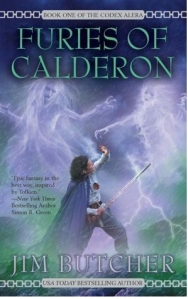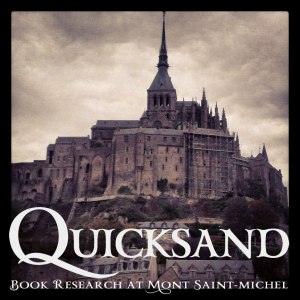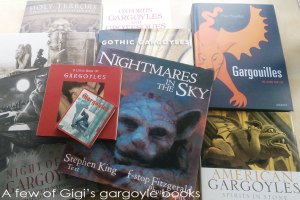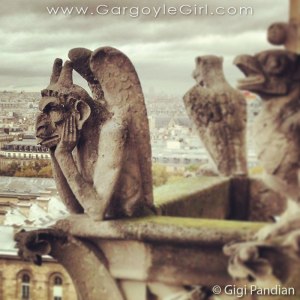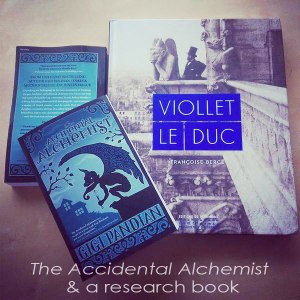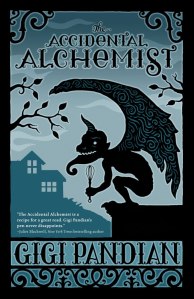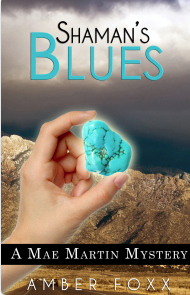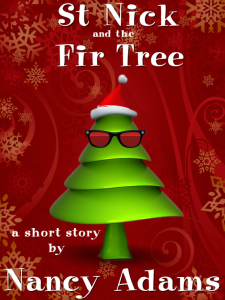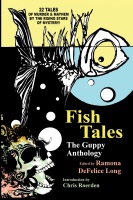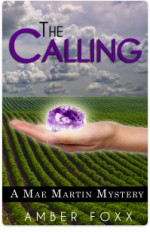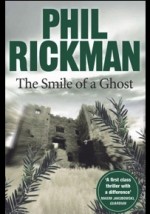
Guest Post by Amber Foxx
Marion Eaton and Virginia King and I have three different takes on the mystery genre, all of them unconventional. Our protagonists, in various ways, pass through the barrier between ordinary reality and something else—another time, or perception and knowledge not accessible by the everyday mind. We’ve come to appreciate each other not only as writers but as friends. Virginia and Marion have actually met—Marion, from England, happened to have already planned a trip to Australia, where Virginia lives, shortly after we started communicating. I haven’t been so lucky yet, but I feel fortunate in their long-distance friendship. To introduce my Mystical Mystery Sisters, I thought it would be fun for each of us to answer the same questions.
When you started writing the first book in your series, did you know where it was going or did it surprise you?
Virginia: I’m a “how would I know what’s going to happen, I’m only the author” kind of writer. The First Lie started with one sentence: All she had to do was jump. This applied to my main character, Selkie Moon, and also to me. I wrote that sentence with no plot and no plan. Selkie is named after the Celtic seal people—the ones who peel off their skins and dance in the moonlight on human legs—but The First Lie is not a retelling of the selkie myth. Selkie Moon is a Sydney girl who’s run off to Hawaii and got tangled up in the mythological layers of a deep mystery. The mythical elements that popped into the story as I wrote it became complex threads that converge in a stunning conclusion – because it certainly stunned me. It still makes me cry whenever I read it.
Amber: I knew what The Calling was about, but not how it would end. When I put the prologue up for my online critique group, one member mentioned that it was clear that Mae’s missing father was going to be a key mystery. Oh? I’d thought he was backstory. Mae’s struggle with her psychic gift was to be the main plot—but then I realized that her search for her father would be the unifying thread, in the background behind the family struggles and the mystery of what Dr. Tann can do with his own strange gift. Already the book was on a new track based on that observation. I didn’t know how any of the relationships would work out—or not work out. The characters had to go through all of it for me to know.
Marion: It surprised me. I had a rough idea of what I was going to write – a memoir of a special time in my life when I was young and the world was rosy. I started writing and came upon something mysterious to which I had never found the answer, and suddenly, the book took a completely different direction. From a rather boring factual account I suddenly found myself writing a fictional mystery thriller complete with ghosts and a time-slip.
Which of the mysterious phenomena in your book comes closest to something that has really happened to you?
Virginia: I’ve mostly taken true things and let my imagination make them bigger than my own experience. But there is one scene where Selkie has an out-of-body experience and heightened perception of her surroundings. This has happened to me several times—once for an hour in a garden where I felt completely connected to one rose, to every curve and tint of its petals, to every tiny flaw, to every drop of dew. I’ve also had amazing insights into my own mind through psychotherapy and there’s a scene where Selkie has to dive into the murky depths of her mind and discover a dark secret. I couldn’t have imagined the mystical layers of that scene if I hadn’t experienced the process myself.
Amber: Two come very close—one creepy, one beautiful. The creepy one is the wolf spirit. It would be a spoiler to say any more. Some of the visionary and energetic experiences Mae has when she starts practicing as a healer are similar to some things I felt when I had a little training in that field.
Marion: Actually, many of them are close to my personal experience. Perhaps the most unnerving was the sound of a horse being ridden fast up a deserted High Street late at night — when there was nothing to be seen. The experience was even more unnerving because it was so close and so real that my husband pushed me out of the way, and he was not normally given to flights of fancy. The most mysterious was when all the clocks stopped— the incident which provided the title of the book. But that was not my personal experience: I overheard the conversation between two of my friends.
What do you do to refresh your creative source—to water your inner garden?
Virginia: Writing itself refreshes me. I’ve almost finished Selkie’s next mystery, The Second Path, and as my imagination puts surprising things into the evolving story, I get energized to follow them. This is my idea of fun. Then in the middle of the night, connections emerge from that day’s writing, so I keep a note book by the bed and decipher my scribbles in the morning. The moments when I’ve not quite woken up often produce pages of notes and these subconscious connections inspire me back to the keyboard. I live in a valley full of birds in the Blue Mountains, west of Sydney, so I also carry my notebook when I walk.
Amber: My daily yoga practice smooths out my energy and helps me focus; it’s good for me that I forget about writing while I’m doing it (although I do get ideas for teaching yoga classes). I occasionally incubate dreams to get an answer to a plot problem. I dreamed one of the scenes in The Calling when I was stuck—a new minor character showed up. My best flow happens when I’m running, though. Something gets knocked loose; some little dam in my mind crumbles and ideas move. Often, I get back from a run and have to take notes before I lose track of all the inspirations. And I need to be around people, too. Go out dancing, do something social. Unlike many writers, I’m an extrovert. People give me energy—and they inspire characters, of course.
Marion: I love that you called it an inner garden, because my garden is the source of much delight and renewal. Spending time working or dreaming there, or walking in nature, always calms, refreshes and fulfils me. For many years I have had a daily practice that makes my day go swimmingly. In the morning, I do a little yoga or tai chi, followed by a dancing or breathing meditation, then I take my dog for a walk through the beautiful Sussex countryside. By the time I come back, I am full of ideas and itching to get on with the day, and particularly to write. I also meditate for 10 minutes before I fall asleep at night, so I wake refreshed and happy. If I find myself stuck when writing, I close my eyes, take a deep breath and call on my Muse for help. She never fails me.

The Mystical Mystery Sisters have teamed up for a giveaway. Enter the drawing to win a paperback copy of the first book in each author’s series. To enter, click here: http://www.rafflecopter.com/rafl/display/eb0a35092/
The drawing will be held midnight, Sunday April 26.
The Calling
The first Mae Martin Psychic Mystery
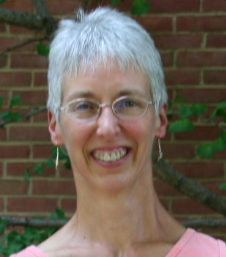
Amber Foxx,
author of
The Mae Martin mysteries
Obeying her mother’s warning, Mae Martin-Ridley has spent years hiding her gift of “the sight.” When concern for a missing hunter compels her to use it again, her peaceful life in a small Southern town begins to fall apart. New friends push her to explore her unusual talents, but as she does, she discovers the shadow side of her visions— access to secrets she could regret uncovering.
Gift or curse? When an extraordinary ability intrudes on an ordinary life, nothing can be the same again.
The Mae Martin Series
No murder, just mystery. Every life hides a secret, and love is the deepest mystery of all.
Amber has worked professionally in theater and dance, fitness, and academia. In her free time she enjoys music, dancing, art, running and yoga. She divides her time between the Southeast and the Southwest, living in Truth or Consequences during her New Mexico months.
When the Clocks Stopped
The Mysterious Marsh Series, Book One

Marion Eaton
author of
The Mysterious Marsh Series
When lawyer Hazel Dawkins decides to write some wills while she waits for the birth of her first child, she unwittingly triggers dramatic consequences. Mysteriously, she encounters Annie, a woman whose tempestuous life took place more than two centuries earlier when Romney Marsh was a violent place, dominated by smugglers.
Soon that past collides with the present, and Hazel finds herself pitted against an evil that has stalked the marsh for centuries. As her destiny intertwines with Annie’s in the shifting time-scape, Hazel confronts a terrifying challenge that parallels history—and could even change it. If she survives.
Retired from legal practice, Marion lives near the sea in the beautiful Sussex countryside with a long-suffering husband, a lazy Saluki, a wild garden and an urge to write into the small hours—all of which she attempts to keep in some sort of order.
The First Lie
Selkie Moon Mysteries, Book One

Virginia King
author of
The Selkie Moon Mysteries
Selkie Moon is a woman on the run. In a mad dash for freedom she’s escaped her life in Sydney to start over again in Hawaii. But her refuge begins to unravel and she’s running from something else entirely. A voice in a dream says that someone is trying to kill her. Not that she’s psychic, no way. But the messages and threats escalate until she’s locked in a game of cat and mouse with a mysterious stalker. Entangled in Celtic and Hawaiian mythologies, the events become so bizarre and terrifying that her instinct is to keep running. But is she running from her past? Or her future?
Virginia has lived most of her life in Sydney, but has travelled to many places. She’s been a teacher, an unemployed ex-teacher, a producer of audio-books, a writer of fifty-plus children’s books, and an award-winning publisher. These days she’s a full-time writer who paints a bit, living in the Blue Mountains west of Sydney with her husband.
From April 21 – 30, each e-book will be on sale for $1.99 US.
https://amberfoxxmysteries.wordpress.com/buy-books-retail-links
http://www.marioneaton.com/mysterious-marsh/
http://www.amazon.com/First-Lie-Selkie-Moon-Mystery-ebook/dp/B00K1VC20Y
To learn more about the authors and their series:
http://www.marioneaton.com/
http://amberfoxxmysteries.wordpress.com
http://selkiemoon.com/
